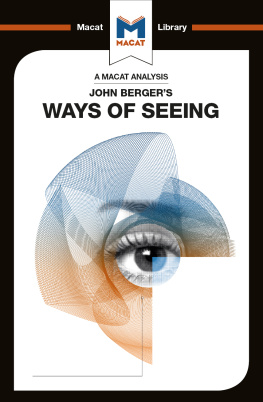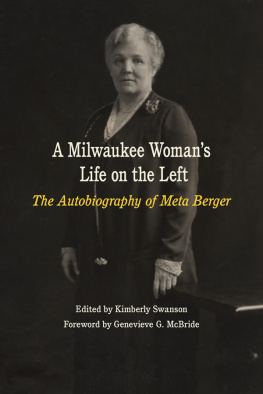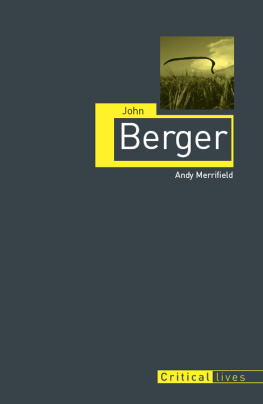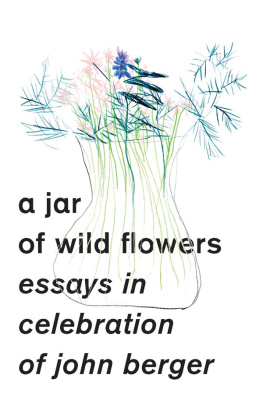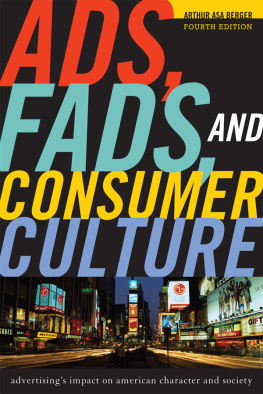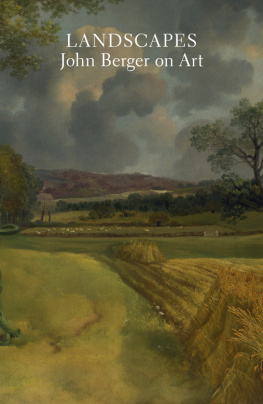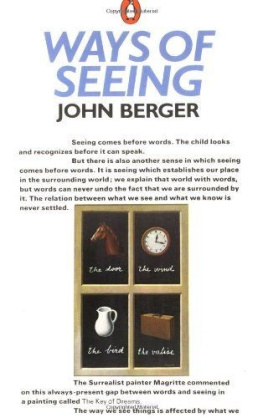Contents
Page List


An Analysis of
John Bergers
Ways of Seeing
Katja Lang
with
Emmanouil Kalkanis

Published by Macat International Ltd
24:13 Coda Centre, 189 Munster Road, London SW6 6AW.
Distributed exclusively by Routledge
2 Park Square, Milton Park, Abingdon, Oxon OX14 4RN
711 Third Avenue, New York, NY 10017, USA
Routledge is an imprint of the Taylor & Francis Group, an informa business
Copyright 2017 by Macat International Ltd
Macat International has asserted its right under the Copyright, Designs and Patents Act 1988 to be identified as the copyright holder of this work.
The print publication is protected by copyright. Prior to any prohibited reproduction, storage in a retrieval system, distribution or transmission in any form or by any means, electronic, mechanical, recording or otherwise, permission should be obtained from the publisher or where applicable a license permitting restricted copying in the United Kingdom should be obtained from the Copyright Licensing Agency Ltd, Barnards Inn, 86 Fetter Lane, London EC4A 1EN, UK.
The ePublication is protected by copyright and must not be copied, reproduced, transferred, distributed, leased, licensed or publicly performed or used in any way except as specifically permitted in writing by the publishers, as allowed under the terms and conditions under which it was purchased, or as strictly permitted by applicable copyright law. Any unauthorised distribution or use of this text may be a direct infringement of the authors and the publishers rights and those responsible may be liable in law accordingly.
www.macat.com
Cataloguing in Publication Data
A catalogue record for this book is available from the British Library.
Library of Congress Cataloguing-in-Publication Data is available upon request.
Cover illustration:David Newton
ISBN 978-1-912303-93-9 (hardback)
ISBN 978-1-912284-64-1 (paperback)
ISBN 978-1-912284-78-8 (e-book)
Notice
The information in this book is designed to orientate readers of the work under analysis, to elucidate and contextualise its key ideas and themes, and to aid in the development of critical thinking skills. It is not meant to be used, nor should it be used, as a substitute for original thinking or in place of original writing or research. References and notes are provided for informational purposes and their presence does not constitute endorsement of the information or opinions therein. This book is presented solely for educational purposes. It is sold on the understanding that the publisher is not engaged to provide any scholarly advice. The publisher has made every effort to ensure that this book is accurate and up-to-date, but makes no warranties or representations with regard to the completeness or reliability of the information it contains. The information and the opinions provided herein are not guaranteed or warranted to produce particular results and may not be suitable for students of every ability. The publisher shall not be liable for any loss, damage or disruption arising from any errors or omissions, or from the use of this book, including, but not limited to, special, incidental, consequential or other damages caused, or alleged to have been caused, directly or indirectly, by the information contained within.
CONTENTS
THE MACAT LIBRARY
The Macat Library is a series of unique academic explorations of seminal works in the humanities and social sciences books and papers that have had a significant and widely recognised impact on their disciplines. It has been created to serve as much more than just a summary of what lies between the covers of a great book. It illuminates and explores the influences on, ideas of, and impact of that book. Our goal is to offer a learning resource that encourages critical thinking and fosters a better, deeper understanding of important ideas.
Each publication is divided into three Sections: Influences, Ideas, and Impact. Each Section has four Modules. These explore every important facet of the work, and the responses to it.
This Section-Module structure makes a Macat Library book easy to use, but it has another important feature. Because each Macat book is written to the same format, it is possible (and encouraged!) to crossreference multiple Macat books along the same lines of inquiry or research. This allows the reader to open up interesting interdisciplinary pathways.
To further aid your reading, lists of glossary terms and people mentioned are included at the end of this book (these are indicated by an asterisk [*] throughout) as well as a list of works cited.
Macat has worked with the University of Cambridge to identify the elements of critical thinking and understand the ways in which six different skills combine to enable effective thinking.
Three allow us to fully understand a problem; three more give us the tools to solve it. Together, these six skills make up the PACIER model of critical thinking. They are:
ANALYSIS understanding how an argument is built
EVALUATION exploring the strengths and weaknesses of an argument
INTERPRETATION understanding issues of meaning
CREATIVE THINKING coming up with new ideas and fresh connections
PROBLEM-SOLVING producing strong solutions
REASONING creating strong arguments
To find out more, visit WWW.MACAT.COM.
CRITICAL THINKING AND WAYS OF SEEING
Primary critical thinking skill: ANALYSIS
Secondary critical thinking skill: CREATIVE THINKING
John Bergers 1972 book Ways of Seeing comprises seven essays (three of which are purely pictorial) about visual arts and the way we understand paintings. The book pushed boundaries, accusing academics and connoisseurs of mystifying art and making it accessible only to an elite minority instead of the general public. Bergers view was that artworks could be made accessible to everyone, educated or not, by exploring the language of art and the social context within which an artwork was created.
To make his case, Berger created and constructed new contexts for understanding and interacting with works of art. His work gains much of its impact from the strength and coherence of his arguments, a product of his exceptional ability to set out a persuasive case in which each part of the argument has a precise, delineated function. Bergers arguments are detailed and complete. He deals with counter-arguments and counter-claims, draws clear distinctions between arguments and explanations, and arranges his case in an effective sequence.
Using direct observation of masterworks, combined with his analysis of contemporary visual culture and critical exploration of works of fine art that have been considered significant, Bergers work can also be seen as a delicate exercise in the critical thinking skill of creative thinking. Indeed, understanding Bergers methods of analysis means you might never look at visual artsparticularly paintingsin the same way again.
ABOUT THE AUTHOR OF THE ORIGINAL WORK
Born in 1926, John Berger was one of the most influential art critics of his generation. Best known for his 1972 BBC television series Ways of Seeing, he was enormously prolific throughout his life, but his print companion to the four half-hour programs is still regarded one of the best introductions to visual culture and how to think critically about art.

